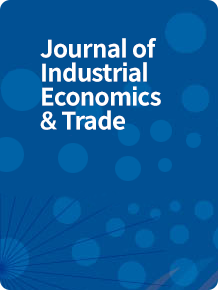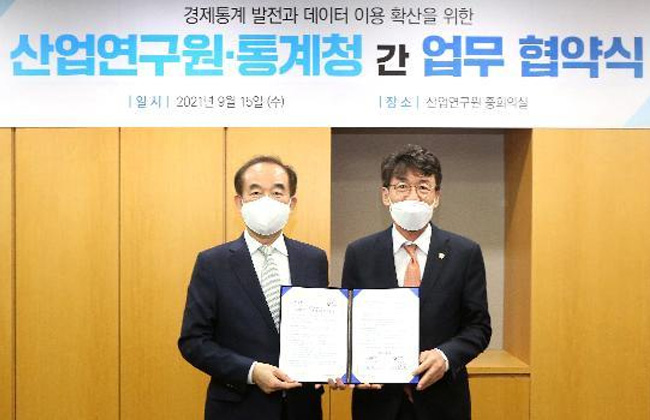Journal of Industrial Economics & Trade

Showing 4 results
-
Optimal Choice Analysis of Direct LNG Importers in Response to Spot Price Fluctuation: Overseas Resale of Long-term Volumes and Increasing Spot Ratio
Song Jae-do; Hong Hyunwoo 2025.08.29
Amid soaring LNG spot prices, concerns have emerged regarding potential strategic behaviors by direct LNG importers, which may increase their profits at the expense of Korea Gas Corporation and users of the average rate system. These concerns stem from observed patterns of reduced direct imports during periods of high spot prices and increased direct imports when spot prices fall. However, direct LNG importers argue that such behavior is infeasible under the current system, as selective purchases based on spot price fluctuations are not allowed. To address this controversy, this study examines the mechanisms underlying fluctuations in spot prices and direct import volumes. The findings reveal that direct LNG importers have an incentive to enhance profits by reselling long-term contracted volumes to overseas markets and intentionally increasing the proportion of spot market purchases during periods of high spot prices. This behavior explains the observed trends in spot price and direct import volumes. Furthermore, the study theoretically investigates how these actions disadvantage Korea Gas Corporation and users of the average rate system. These findings clarify the optimal choice of direct LNG importers and offer policy implications for regulating future direct LNG import practices
-
Analyzing the Relationship Between Hiring Safety and Health Managers and Industrial Accident Prevention
Gil Eunsun; Kim Donggeun 2025.08.29
The long-term decline in industrial accidents in South Korea has recently reversed due to expanded recognition criteria and increased approval rates. In response, policy discussions continue over increasing the employment of dedicated safety and health managers to enhance workplace safety. This study empirically examines their impact using data from the Industrial Safety and Health Survey.
The results show that in manufacturing and services, appointing at least one safety manager reduces serious accidents, with additional hires offering diminishing returns. Health managers help prevent minor accidents but show no added effect with further appointments. In construction, higher occupational safety and health (OSH) expenditures are more effective in reducing accidents than increasing manager numbers.
These results suggest that simply increasing the number of dedicated managers is insufficient. Instead, effective policies should target industry- specific risks and adopt a fault-based, differentiated regulatory framework that adjusts oversight based on accident history and demonstrated safety efforts.
-
Consumer Preference Analysis for Confidentiality, Security and Expertise in the Testing and Certification Industry
Kim Sungyoon; Choi Donghwan ; Shim Dongnyok 2025.08.29
The TIC(Testing, Inspection, Certification) industry has long developed into an oligopolistic service market where a small number of companies provide services under state management and supervision. In this process, the industry is facing an industry-wide crisis due to the lack of response to ICT convergence and market opening. In this context, this study examines key factors influencing the competitiveness of the testing and certification industry, focusing on confidentiality and expertise. Using conjoint analysis, we assess the part-worth values of key attributes, including original document tamper prevention, digital test reports, the number of confidentiality violations, competency of testing personnel, investment rate in testing and certification infrastructure, report quality, and service fees. The results indicate that confidentiality is more critical than expertise, with confidentiality violations and tamper prevention having the greatest impact on client preferences. Market share simulations demonstrate that improvements in confidentiality and expertise significantly contribute to market expansion, while fee reductions serve as an effective strategy for strengthening competitiveness. This study provides practical insights for testing and certification institutions, highlighting the need to enhance confidentiality, expertise, and pricing strategies to improve service reliability and professionalism
-
A Study on the Incentives for Innovation in E-commerce Sales Companies: Focusing on Market Environment and Platform Strategies
Kang Minji 2025.08.29
This study analyzes the determinants of innovation among sellers in the digital platform-based e-commerce market and examines the impact of the market structure formed by platforms on companies’ strategic choices. Specifically, it compares the effects of market environment factors perceived by companies (e.g., degree of competittion and technological uncertainty) and market strategies (e.g., platform selection, multi-homing, and export status) on various innovation indicators (product innovation, service innovation, business process innovation, innovation activities, innovation collaboration, and digital transformation) across different industries.
The analysis employed a comprehensive set of data, integrating the Fair Trade Commission’s registry of telecommunications sales companies with Market DB Pro’s list of platform-using sales companies, along with the Korea Institute of Science and Technology Policy’s corporate innovation survey data. To analyze the differences in the average innovation indicators across market environments, an independent samples t-test was employed. In addition, to analyze the impact of distribution strategies on innovation incentives, a Probit model was used for the binary innovation indicators.
This study aims to clarify the structural conditions and industry-specific heterogeneity surrounding innovation incentives for sellers in the platform industry and provide an empirical foundation for balanced policy design.
Please enter the security text below
to prevent email collection
Please check the information of the person in charge.
연구과제 제안이 접수되었습니다.
신청이 접수되었습니다.


View Summary
코로나19 발생 이후 대부분의 고용 관심사가 항공 및 여행서비스, 음식·숙박 서비스 등 주로 서비스 업종에 집중된 상황에서 본 연구는 최근 그 중요성이 강조되고 있는 제조업의 고용변화를 살펴보았다. 분석에 따르면, 코로나19 이후 제조업 고용은 비교적 큰 충격 없이 빠르게 회복하는 모습을 보이고 있다. 제조업 고용은 서비스업에 비해 큰 충격 없이 유지되고 있고, 코로나19 직후 2020년 상반기에 약간 하락하였지만 하반기부터 회복 추세를 보이고 있으며, OECD 주요국의 제조업과 비교하여도 일본과 함께 고용 충격이 비교적 작게 나타나고 있다. 그러나 전반적으로 양호한 고용 성적에도 불구하고 제조업 내 특성 별로는 차이가 나타나는 것으로 보인다. 종사상 지위 별로 보면, 임시·일용직, 고용원이 있는 자영업자에서 고용 충격이 상대적으로 크게 나타났고, 상용직과 고용원이 없는 자영업자는 큰 충격이 없는 것으로 나타났다. 제조업 규모별로는 300인 이상의 경우 코로나 발생 초기 약간의 충격 이후 고용이 빠르게 반등하면서 코로나 이전보다 고용이 더 증가한 반면, 이보다 작은 규모의 제조업체들의 경우 고용 회복이 더디게 나타나고 있다. 고용의 중장기, 단기 추세선을 비교한 결과 제조업 업종에 따른 차이를 보였다. 코로나 발생 이전 3년간의 추세선을 2020년 1월부터 연장한 선과, 2020년 1월부터의 실제 자료를 이용한 단기 추세선을 비교한 결과, 의약품은 코로나19 발생 이전부터 시작하여 코로나19 발생 이후에도 견조한 증가세를 유지하고 있으며, 전자부품·컴퓨터, 기타운송장비, 가구는 코로나19 이후 오히려 고용 추세가 개선되었다. 그러나 다수 업종은 코로나 발생 이후 고용이 하락하였는데, 특히, 비금속광물, 1차금속, 금속가공 분야나 인쇄·기록매체 업종에서 하락이 상대적으로 크게 나타났다.
The following information is provided.
inform@kiet.re.krPlease complete the CAPTCHA below.
[전지적키에트시점] (Eng sub)심상치 않은
국내 대기업 움직임??
KIET 시점에서 보는 미래 로봇 산업 전망은
어떨까요?
경제전문가가 알려드립니다!
(산업연구원 박상수 실장)


